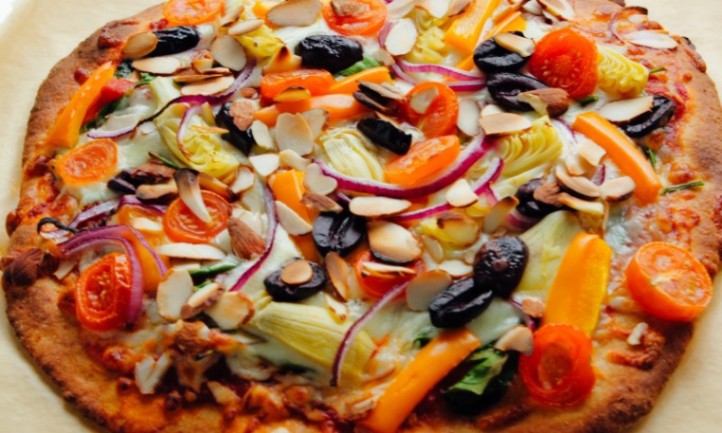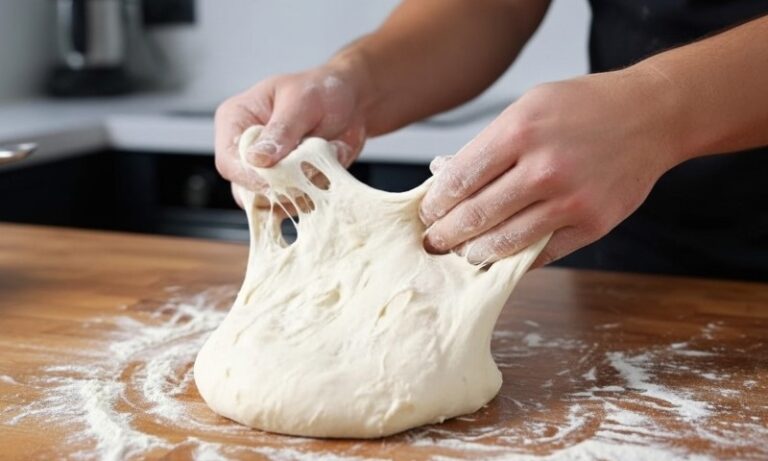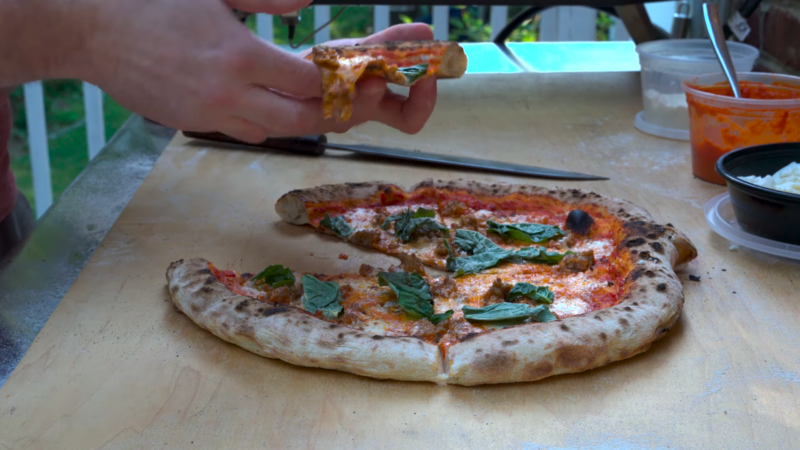Cooking pizza dough thoroughly is crucial for both flavor and health.
Undercooked dough not only tastes unpleasant but can also pose health risks due to uncooked flour and yeast.
Ensuring your pizza dough is cooked properly enhances the overall eating experience and safety.
Table of Contents
ToggleMethods to Fix and Prevent Undercooked Pizza Dough
Fixing and preventing undercooked dough is possible through several methods.
Baking Environment
High baking temperatures are essential for cooking pizza dough thoroughly.
Aim to bake your pizza at temperatures between 475°F (245°C) and 500°F (260°C).
Preheating your oven to the desired temperature before baking is critical.
Proper Baking Surfaces

Using a pizza stone or pizza steel can significantly improve your baking results.
These surfaces retain and evenly distribute heat, mimicking the effects of a traditional pizza oven.
Preheat the stone or steel in the oven for at least 45–60 minutes to ensure it reaches the optimal temperature.
Dough Thickness
Achieving the right dough thickness is key to even cooking.
Stretch the dough thin enough to ensure it cooks all the way through but thick enough to hold the toppings.
Practice different techniques for stretching and rolling the dough to get a consistent thickness.
Avoiding a thick crust can prevent the center from being undercooked.
Avoiding Excessive Toppings

Overloading your pizza with toppings can prevent the dough from cooking properly.
Too much sauce, cheese, and wet ingredients like vegetables can create a barrier that hinders heat from penetrating the dough.
Use a moderate amount of toppings to ensure they cook through without affecting the dough’s texture.
Managing Dough Temperature
Before baking, ensure your dough is at room temperature.
Cold dough can take longer to cook, leading to an undercooked center.
Allow the dough to rest at room temperature for about 30 minutes before stretching and adding toppings.
Utilizing the Broiler

The broiler can provide an extra blast of top heat, helping to cook the toppings and crust simultaneously.
Position your pizza close to the broiler for a few minutes towards the end of the baking time.
Adjusting Oven Rack Positions
Positioning the oven rack can impact how your pizza cooks.
Lowering the rack ensures the bottom crust cooks thoroughly.
Combining this with a hot baking surface like a pizza stone can produce a crispy, well-cooked crust.
Experiment with different rack positions to find the best setup for your oven.
Common Causes of Undercooked Pizza Dough
Undercooked pizza dough can result from various factors, each affecting the final product in different ways.
One common issue is baking at too low a temperature. Pizza needs to be baked at high temperatures to ensure the crust cooks evenly and thoroughly.
If the oven temperature is too low, the dough will not receive enough heat to cook properly, leaving it raw or doughy inside.
Ideally, your oven should be preheated to a temperature between 475°F (245°C) and 500°F (260°C) before you place the pizza inside.
Another frequent cause is a short baking time. Even if you bake your pizza at the right temperature, it needs to stay in the oven long enough for the heat to penetrate and cook the dough completely.
Checking the crust’s color and texture can help determine if it needs more time.
Lastly, excessive toppings can contribute to undercooked dough.
Piling on too many ingredients can insulate the dough from the oven’s heat, preventing it from cooking properly.
Heavy toppings, especially those with high moisture content like vegetables and certain meats, can release liquid during baking, further hindering the dough’s ability to cook through.
Balancing the amount of sauce, cheese, and other toppings is crucial to achieving a well-cooked pizza.
Using a moderate amount of each topping ensures that the dough can bake properly without becoming soggy or undercooked.
Summary
Cooking pizza dough thoroughly requires attention to temperature, time, and preparation techniques.
By experimenting with these methods and adjustments, you can perfect your pizza-baking skills and enjoy consistently delicious results.
Related Posts:
- How Long Can You Store Pizza Dough in the Fridge?
- Can You Eat Pizza and Still Lose Weight? – What…
- Can You Reheat Deep-Dish Pizza in an Air Fryer? - A…
- How Long Can Pizza Be Left at Room Temperature -…
- When to Use a Pizza Peel? A Tool That Can Make a Difference
- Why You Should Brush Your Pizza Crust with Oil (and…










